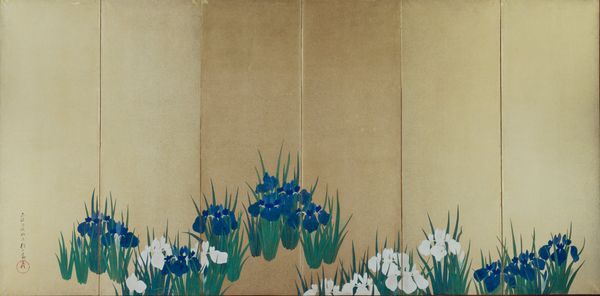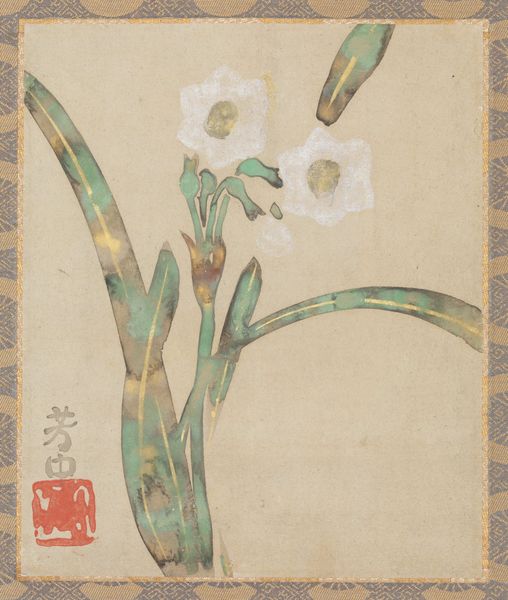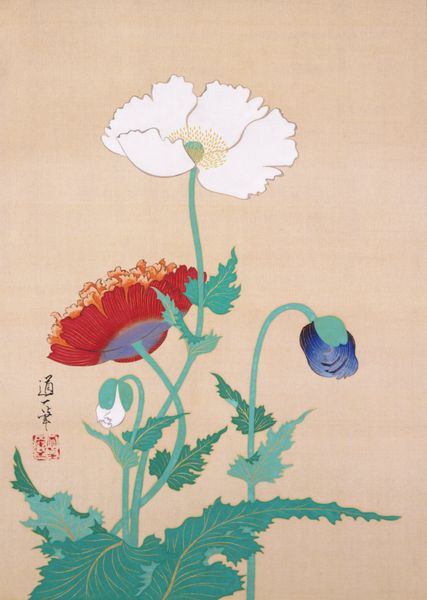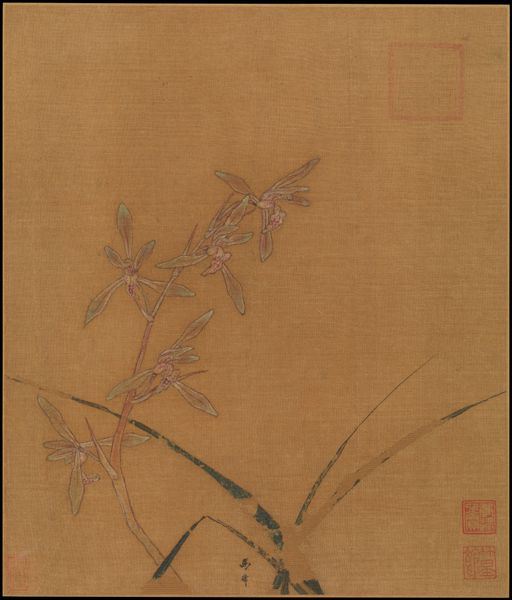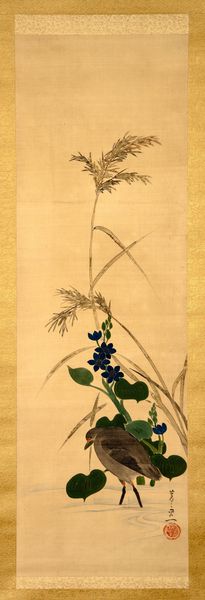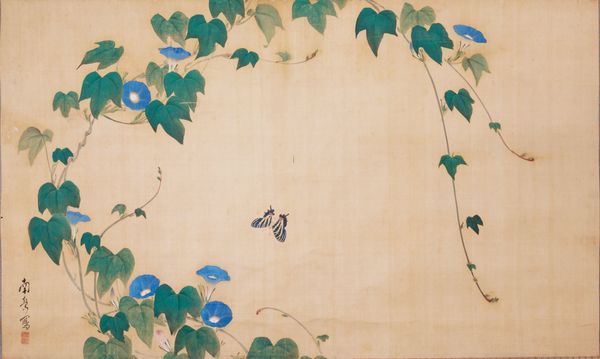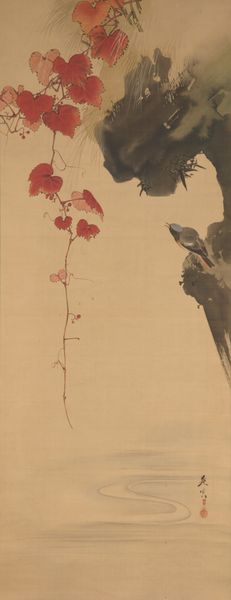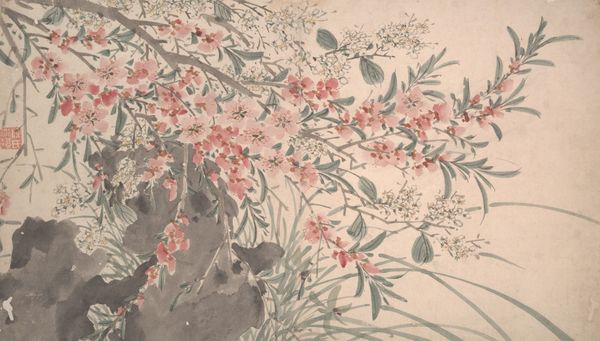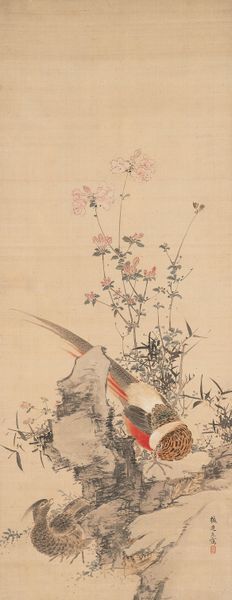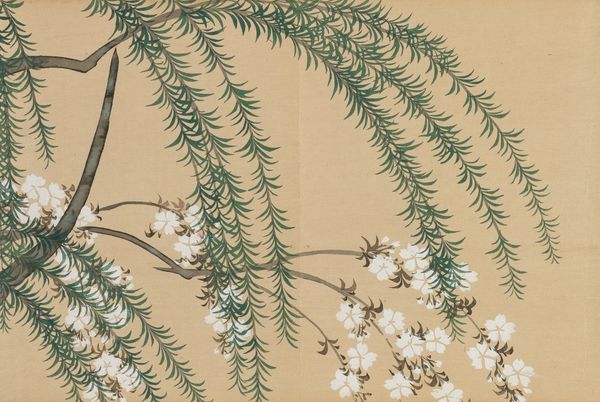
paper, watercolor, ink
#
water colours
#
asian-art
#
landscape
#
ukiyo-e
#
paper
#
watercolor
#
ink
#
orientalism
#
watercolor
Dimensions: 36 3/4 × 13 3/4 in. (93.35 × 34.93 cm) (image)69 7/8 × 19 3/16 in. (177.48 × 48.74 cm) (mount, without roller)
Copyright: Public Domain
Editor: We’re looking at Nakamura Hōchū’s “Blue Iris,” created around the early 19th century. It’s a watercolor and ink piece on paper. I’m immediately drawn to the simple composition and the delicacy of the watercolor. What stands out to you in this work? Curator: What grabs me are the materials and the methods of production in relation to the art market of the time. Paper was itself a valuable commodity; its sourcing and production speak to class and consumption. Consider the labor involved in preparing the inks, grinding the pigments, the skills to manipulate a brush to this delicacy. Are we seeing here a product destined for a wealthy merchant, or for export, feeding the orientalist desires of the West? Editor: That's a perspective I hadn't considered. How does the medium itself impact the artwork's meaning, beyond its initial intended market? Curator: The choice of watercolor and ink points to the tradition of ukiyo-e, but how does Hōchū push against that tradition through material experimentation or innovative techniques? Is there evidence of mass production or unique artistic interventions? Are these readily available pigments, or something special? The composition’s simplicity could be dictated by the ease of transport, mass reproduction… or perhaps something completely contrary, like its intent to emphasize materials over ornate narrative. Editor: So, by looking closely at the materials, we can unlock narratives about the art world of the time. The details of the brushstrokes are maybe less about what is shown but more how it was crafted. Curator: Precisely. How the artist interacts with their medium unveils layers of socio-economic conditions and cultural values that shaped its creation and reception. And, in turn, shapes our contemporary interpretation! Editor: That’s a brilliant way to look at it. Thanks for widening my view. Curator: And thank you for prompting the reflection; each viewing adds another layer of appreciation!
Comments
No comments
Be the first to comment and join the conversation on the ultimate creative platform.
